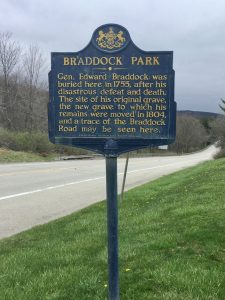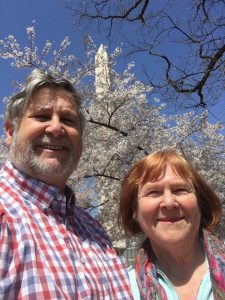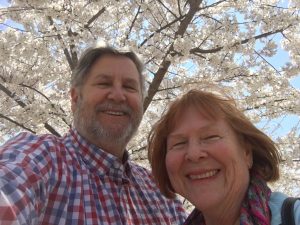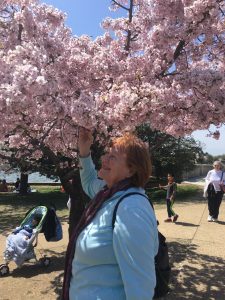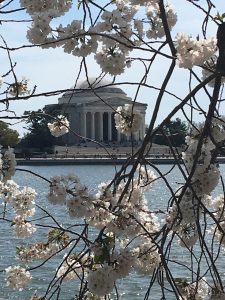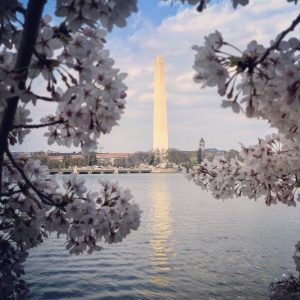Wednesday we packed up our necessary stuff and headed to Macomb Illinois. The road takes in some interstate as well as sections of the National Road – Highway 40. Thus we have both a four-lane expressway experience and two land winding road through the countryside. It was getting along lunchtime and we pulled into a lovely spot – Braddock Inn and Restaurant.

We had a delightful lunch and headed back on the road. However, immediately next to the place was the General Braddock Grave – part of the Fort Necessity National Battlefield. Well, since we have been talking about Braddock along the way, we pulled in and walked around.
On June 25, 1755, the largest army assembled in North America up to that time passed through the area that is now the Braddock Grave site. British Maj. General Edward Braddock led the first 1,400 soldiers of his 2,400-man army. Braddock followed the trail originally blazed by George Washington in April 1754. The trail at that point was nothing more than a marked path through the woods.
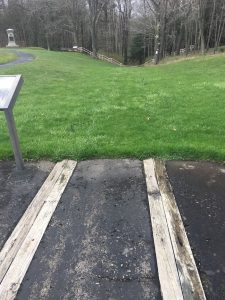
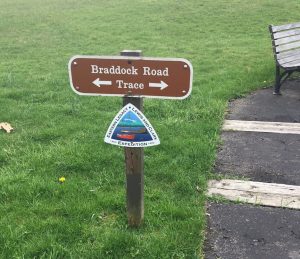
In order to move the all the British Troops and supplies, the trail was widened to about 12 feet and cleared of all trees and materials. Braddock’s goal of expelling the French from Fort Duquesne (present day Pittsburgh) was thwarted when his advance troops collided with a force of French and Indians.
Although the initial exchange of musketry favored the British, felling the French commander and causing some Canadian militia to flee, the remaining Indian/French force reacted quickly, running down the flanks of the column and putting it under a murderous crossfire. Braddock’s troops reacted poorly and became disordered. The British attempted retreat, but ran into the rest of the British soldiers left behind from earlier. Braddock, rallying his men time after time, fell at last, mortally wounded by a shot through the chest.
Braddock was borne off the field by George Washington and Col. Nicholas Meriwether and died on 13 July from wounds suffered in the battle. Before he died Braddock left Washington his ceremonial sash that he wore with his battle uniform and muttered some of his last words, which were ‘Who would have thought?’ Reportedly, Washington never went anywhere without this sash for the rest of his life, be it as the commander of the Continental Army or with his presidential duties. It is still on display today at Washington’s home on the Potomac River, Mount Vernon.
On July 14, what remained of that once proud British army hobbled past present day site of Braddock’s grave retreating from their disastrous defeat at the Battle of the Monogahela. The retreating troops camped near hear and Braddock died that night. He was buried under the road, in an unmarked grave, to keep it from being disturbed by Indians. In 1804, workmen repair this section of the Braddock Road discovered what is believed to be Braddock’s original gravesite. His remains were then reinterred on the hill and a granite monument was added in 1913 to mark the grave.
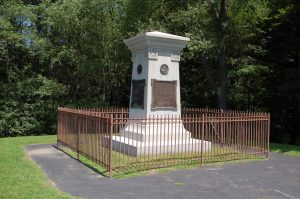
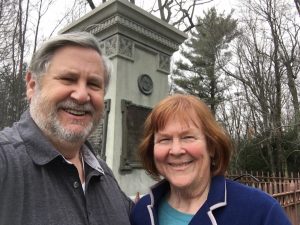
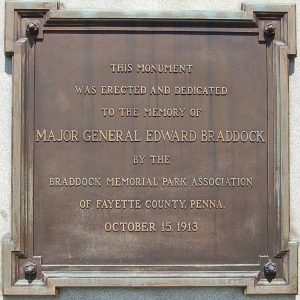
Few remnants of the Braddock Road remain but it was originally the first ‘highway’ to the west. This route eventually became Maryland route 49 and Virginia route 620. Now it follows along Highway 40 in many sections.
